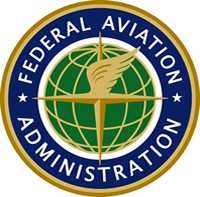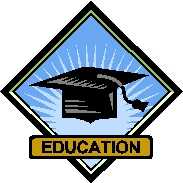Wed, Jun 17, 2009
Contest Addresses Airport Issues And Needs
 The FAA recently
selected winners for its 3rd annual Design Competition for
Universities. Binghamton University - State University of New York,
The Ohio State University, and the University of Southern
California captured first place awards; nine other submissions also
received awards.
The FAA recently
selected winners for its 3rd annual Design Competition for
Universities. Binghamton University - State University of New York,
The Ohio State University, and the University of Southern
California captured first place awards; nine other submissions also
received awards.
The FAA created this competition to engage individual students
or teams of students at U.S. universities working under the
guidance of a faculty mentor to address airport operations and
infrastructure issues and needs. Students were presented with a
number of technical challenges relating to airport operations and
maintenance, runway safety, airport environmental interactions, and
airport management and planning. The technical challenges embraced
many engineering and science disciplines and were often used as
part of a capstone design course. The Competition requires students
to reach out to airport operators and industry experts to advise
them in their proposals and to help them assess the efficacy of
their proposed designs/solutions. It provides a framework and
incentives for quality educational experiences for college students
and raises student awareness of airports as a vital and interesting
area for engineering and technology careers.
A student team from the Computer Science Department at the
University of Southern California won the first place award for
Runway Safety. Dr. Michael Crowley was the team’s advisor.
The students designed a Controller Intent Monitoring Interface
(CIMI) that would ensure that all high-speed operations conducted
on runways are executed in a safe manner that is consistent with
FAA regulations.

The Department of Aviation at The Ohio State University
garnered the top prize for the Airport Management and Planning
Challenge. A student team advised by Dr. Seth Young for its
submission on “Developing an integrated web-based tool to
enhance Safety Management System (SMS) planning and management for
airports,” focused on engaging employees in implementation of
the System and inclusion of a customer service focus.
The Computer Science Department at Binghamton University - State
University of New York captured the top prizes for the Airport
Environmental Interactions and Airport Operation and Maintenance
challenges. Professor William Ziegler advised the student teams.
The submission, titled “Using a High Vacuum Evaporator to
Treat Anti-icing and Deicing Byproducts,” won the first place
award for the Airport Environmental Interactions challenge and was
recognized for its imminently practical and technically feasible
idea. The Submission titled, “Radiant Heating of Airport
Aprons” secured the top prize for the Airport Operation and
Maintenance challenges category and provided an innovative solution
to snow and ice removal on airport aprons.
Panels of FAA, industry and academic experts selected the
winning proposals. Students from winning teams will equally divide
prizes as follows: $2500 for first place, $1500 for second place,
$1000 for third place and $500 for an honorable mention. The first
place teams will receive their awards from the FAA and presented
their work at the American Association of Airport Executives annual
meeting in Philadelphia on June 16.
More News
Circle To Runway (Runway Number) Used by ATC to inform the pilot that he/she must circle to land because the runway in use is other than the runway aligned with the instrument appr>[...]
Aero Linx: National Aviation Safety Foundation (NASF) The National Aviation Safety Foundation is a support group whose objective is to enhance aviation safety through educational p>[...]
At Altitude Of About 250-300 Ft Agl, The Airplane Experienced A Total Loss Of Engine Power On November 6, 2024, at 1600 central standard time, a De Havilland DHC-1, N420TD, was inv>[...]
From 2009 (YouTube Edition): Three Hour Flight Was 'Flawless' -- At Least, Until Mother Nature Intervened For anyone who loves the aviation business, this was a VERY good day. Afte>[...]
Also: AMA Names Tyler Dobbs, More Falcon 9 Ops, Firefly Launch Unsuccessful, Autonomous F-16s The Air Force has begun ground testing a future uncrewed jet design in a milestone tow>[...]
 ANN's Daily Aero-Term (05.05.25): Circle To Runway (Runway Number)
ANN's Daily Aero-Term (05.05.25): Circle To Runway (Runway Number) ANN's Daily Aero-Linx (05.05.25)
ANN's Daily Aero-Linx (05.05.25) NTSB Prelim: De Havilland DHC-1
NTSB Prelim: De Havilland DHC-1 Classic Aero-TV: The Boeing Dreamliner -- Historic First Flight Coverage
Classic Aero-TV: The Boeing Dreamliner -- Historic First Flight Coverage Airborne-NextGen 05.06.25: AF Uncrewed Fighters, Drones v Planes, Joby Crew Test
Airborne-NextGen 05.06.25: AF Uncrewed Fighters, Drones v Planes, Joby Crew Test




